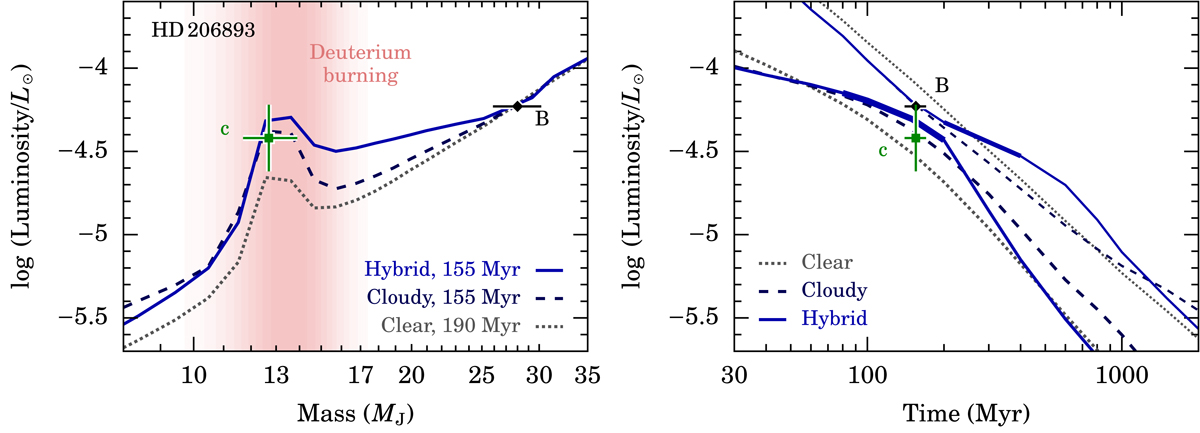Fig. 5.

Download original image
Isochrones and cooling curves for both HD 206893B and c. Left: isochrones from Saumon & Marley (2008) that match the dynamical mass and bolometric luminosity of HD 206893B, with the respective age indicated in the legend. The deuterium-burning mass limit, which depends on bulk planetary properties, is shown as a fuzzy pink region (Spiegel et al. 2011). Right: corresponding cooling curves for the best-fit masses. The system age of 155 ± 15 Myr comes from our isochrone analysis (see text). The thick part of the hybrid cooling curves highlights 1400 K > Teff > 1200 K, with cloudy (clear) atmospheres at earlier (later) times.
Current usage metrics show cumulative count of Article Views (full-text article views including HTML views, PDF and ePub downloads, according to the available data) and Abstracts Views on Vision4Press platform.
Data correspond to usage on the plateform after 2015. The current usage metrics is available 48-96 hours after online publication and is updated daily on week days.
Initial download of the metrics may take a while.


